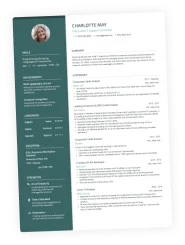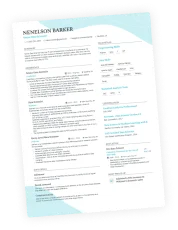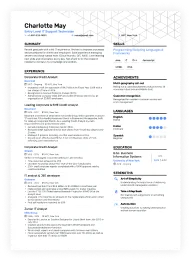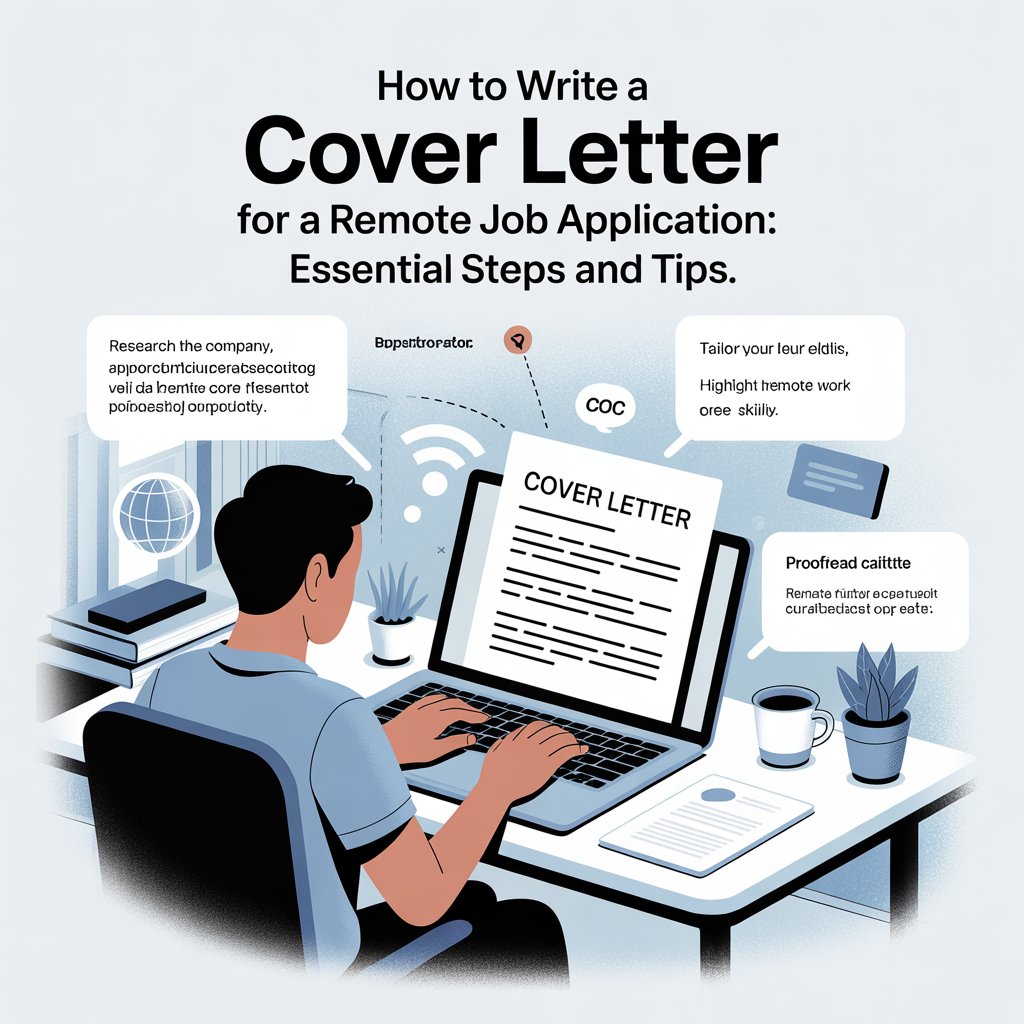Writing a cover letter can feel daunting, especially when you want to make a great impression. It’s not just an extra step in the application process; it’s your chance to showcase who you are and why you’re the perfect fit for the job. A well-crafted cover letter can grab the attention of hiring managers and set you apart from other candidates. In this article, we’ll explore eye-catching cover letter writing tips to help you stand out in the job market.
Key Takeaways
- Start with a strong introduction that captures attention.
- Tailor your letter for each job application to highlight relevant skills.
- Use specific examples to demonstrate your achievements.
- Research the company to align your message with their values.
- Proofread carefully to avoid any errors and ensure clarity.
Understanding the Purpose of a Cover Letter
So, you’re applying for jobs, and someone mentioned you need a cover letter. What’s the deal? Why can’t you just send your resume? Well, a cover letter is more than just a formality; it’s your chance to shine and show a potential employer who you really are.
Why a Cover Letter Matters
Think of your resume as a highlight reel. It shows what you’ve done. A cover letter? That’s the director’s cut, where you explain why you did it, and why you’re the perfect fit for this specific role. It’s your chance to make a personal connection and show your enthusiasm. It’s also a way to address any potential red flags, like employment gaps, head-on. Basically, it’s your sales pitch. A well-crafted cover letter can significantly increase your chances of landing an interview. It shows you’re serious about the job and willing to put in the extra effort. It’s a chance to make a strong first impression.
How It Complements Your Resume
Your resume lists your skills and experience; your cover letter contextualizes them. Instead of just saying you have project management skills, you can describe a specific project where you successfully used those skills, highlighting the results you achieved. It’s about telling a story, not just listing facts. The cover letter allows you to expand on key achievements and tailor your qualifications to the specific requirements of the job. It’s not about repeating your resume; it’s about adding depth and personality. It’s a chance to show how your unique background makes you the ideal candidate. Think of it as a way to provide a narrative to your career history.
What Employers Look For
Employers aren’t just looking for someone who can do the job; they’re looking for someone who wants to do the job and will fit in with the company culture. Your cover letter is your opportunity to demonstrate your understanding of the company’s mission, values, and goals. It’s a chance to show that you’ve done your research and are genuinely interested in the opportunity. They want to see that you’ve taken the time to understand their needs and can articulate how your skills and experience align with those needs. Employers often use cover letters to assess a candidate’s communication skills and attention to detail. A well-written, error-free cover letter demonstrates professionalism and competence. Understanding the structure of a cover letter is key.
Crafting a Compelling Introduction
First impressions are huge, especially when you’re trying to land a job. Hiring managers are swamped with applications, so you’ve got to grab their attention right away. A boring intro is a death sentence for your cover letter.
Grab Attention Immediately
Your opening paragraph is your hook. Don’t bury the lead. Instead of stating the obvious, like your name and the position you’re applying for, jump right into what makes you a standout candidate. Think about your biggest achievements and how they directly relate to the job requirements. This shows you’re not just another applicant; you’re someone who gets results. Make sure you express your enthusiasm for the job.
Avoid Generic Openings
Generic openings are the kiss of death. Statements like “I am writing to express my interest…” are bland and unoriginal. They tell the hiring manager nothing about you and why you’re a good fit. Instead, try to be specific and show that you’ve done your homework. Mention something unique about the company or the role that excites you. This demonstrates genuine interest and initiative.
Use a Personal Touch
Adding a personal touch can make your cover letter stand out. This doesn’t mean sharing your life story, but rather finding a way to connect with the company or the hiring manager on a more human level. Maybe you admire their work in a particular area, or you share a similar passion. Whatever it is, make it genuine and relevant. This helps you emphasize relevant experience and qualifications.
Think of your introduction as a mini-sales pitch. You’re selling yourself, so make it compelling. Highlight your strengths, show your enthusiasm, and make it clear why you’re the best person for the job. A strong start can make all the difference in getting your foot in the door.
Highlighting Your Relevant Skills
Match Skills to Job Requirements
Okay, so you’ve got the job description in front of you. Now’s the time to really dig in. Don’t just list your skills; show how they directly address what the employer is looking for. Think of it as solving a puzzle – the job description gives you the pieces, and your skills are how you fit them together. Make it obvious that you’ve read the description carefully and understand what’s needed.
Use Specific Examples
Instead of saying “I’m a great communicator,” tell a story. Did you lead a project where you had to explain a complex idea to a diverse team? Did you resolve a conflict between team members? Specific examples make your skills believable and memorable. Think about using the STAR method (Situation, Task, Action, Result) to structure your examples. This helps you provide context and demonstrate the impact of your actions. It’s about showing, not just telling. For example, you could mention past job experiences that highlight your ability to handle various situations.
Showcase Soft Skills
Don’t forget the soft skills! Things like teamwork, problem-solving, and adaptability are super important. These are the skills that make you a good colleague and a valuable asset to any team. Again, use examples. Did you help a teammate meet a deadline? Did you come up with a creative solution to a problem? Did you quickly adapt to a new software or process? These are the things that make you stand out. Remember to tailor your anecdotes to showcase specific skills relevant to the job.
It’s easy to fall into the trap of just listing skills, but that doesn’t tell the employer anything about how you actually use them. Focus on providing concrete examples that demonstrate your abilities and show how you can contribute to their team. Think about what makes you unique and how you can bring value to the company.
Researching the Company
Understanding Company Culture
It’s important to understand the company culture before you even start writing your cover letter. You don’t want to say something that clashes with their values or way of doing things. Look at their website, social media, and even employee reviews on sites like Glassdoor. What kind of language do they use? Do they emphasize teamwork, innovation, or customer service? Knowing this will help you tailor your letter to show that you’d fit in well.
Identifying Key Values
Dig deeper than just surface-level observations. What are the company’s core values? These are the guiding principles that drive their decisions and actions. You can often find these on their “About Us” page or in their mission statement. Once you know their values, you can highlight experiences and skills that align with them. For example, if a company values innovation, you might talk about a time you came up with a creative solution to a problem. This shows that you not only understand their values but also embody them. It’s about making a genuine connection, not just name-dropping their values.
Tailoring Your Message
Now that you’ve done your research, it’s time to tailor your message. This means going beyond simply mentioning the company’s name and product. Show that you understand their specific challenges and opportunities. How can your skills and experience help them achieve their goals? Be specific and provide examples. For instance, if you know they’re launching a new product, you could talk about your experience with similar launches and how you could contribute to their success. This level of personalization shows that you’re genuinely interested in the company and not just sending out a generic cover letter. You can also express your interest in the company by highlighting their achievements.
Researching the company is not just about finding information; it’s about understanding their values, culture, and goals. This understanding allows you to craft a cover letter that resonates with the hiring manager and demonstrates that you’re a good fit for the company.
Structuring Your Cover Letter Effectively
Okay, so you’ve got all this great stuff to say, but how do you actually put it together in a way that makes sense? It’s not just about what you say, but how you say it. Think of your cover letter as a mini-presentation of yourself. You need to grab their attention, keep them interested, and leave them wanting more. Let’s break down how to structure it effectively.
Using a Professional Format
First impressions matter, right? Your cover letter needs to look the part. That means using a clean, easy-to-read font (think Arial, Times New Roman, or Calibri) and keeping the formatting consistent with your resume. A well-formatted cover letter shows you pay attention to detail. It also makes it easier for the hiring manager to quickly scan and find the information they’re looking for. Think of it as making their job easier – and that’s always a good thing. You can start your cover letter with your contact details at the top.
Including Essential Information
There’s some basic info that has to be in there. Your name and contact details, of course. The date. And the hiring manager’s name and address (if you can find it – research is key!). A proper greeting (Dear Mr./Ms./Dr. [Last Name]). And a professional closing (Sincerely, Best regards, etc.). Don’t skip these! It’s like forgetting your manners – it just doesn’t look good. Make sure to follow the application instructions to a T.
Maintaining a Logical Flow
Think of your cover letter as a story. It needs a beginning, a middle, and an end. Start with a strong opening that grabs their attention. Then, move into the body of the letter, where you highlight your skills and experience. Finally, wrap it up with a compelling conclusion that leaves them wanting to learn more. Each paragraph should flow logically into the next, creating a smooth and easy reading experience. Here’s a simple structure to follow:
- Introduction: Briefly introduce yourself and state the position you’re applying for.
- Body Paragraph 1: Highlight your relevant skills and experience.
- Body Paragraph 2: Explain why you’re interested in the company and the role.
- Conclusion: Reiterate your interest and thank the reader for their time.
A good cover letter isn’t just a summary of your resume. It’s a chance to show your personality, your enthusiasm, and your understanding of the company and the role. It’s about connecting with the reader on a human level and making them want to meet you.
Writing an Engaging Body
The body of your cover letter is where you really sell yourself. It’s not just about listing your experience; it’s about showing how your experience makes you the perfect fit for this specific role at this specific company. Think of it as telling a story, where you’re the hero who solves the company’s problems. Let’s break down how to make that story compelling.
Connecting Your Experience to the Role
This is where you draw direct lines between what you’ve done and what the job requires. Don’t just say you have experience; explain how that experience translates into value for the employer. For example, instead of saying “I have project management experience,” say “In my previous role at Company X, I managed a team of five to deliver Project Y measurable qualifications ahead of schedule and under budget, resulting in a 15% increase in efficiency.” See the difference? It’s specific, it’s measurable, and it shows how your skills directly benefit the company.
Demonstrating Enthusiasm
Enthusiasm is contagious. Let your passion for the role and the company shine through. This isn’t about gushing; it’s about showing genuine interest and excitement. Mention something specific that excites you about the company’s mission, values, or recent projects. For example, “I was particularly impressed by [Company Name]’s recent initiative to promote sustainability, as demonstrated by [specific project or achievement]. My background in environmental science and passion for eco-friendly practices align perfectly with this commitment.”
Using Quantifiable Achievements
Numbers speak louder than words. Whenever possible, quantify your achievements to demonstrate the impact you’ve made in previous roles. Did you increase sales by a certain percentage? Did you reduce costs by a specific amount? Did you improve customer satisfaction scores? Use these numbers to showcase your value. For instance, “By implementing a new marketing strategy, I increased lead generation by 40% within six months.” These quantifiable achievements resonate with hiring managers and make your claims much more credible.
Remember, the body of your cover letter is your chance to shine. It’s where you connect your skills and experience to the specific needs of the employer, demonstrate your enthusiasm, and showcase your achievements with quantifiable results. Make every sentence count, and tailor your message to each application for maximum impact.
Concluding with Impact
Recapping Key Points
Alright, so you’ve made it to the end! Don’t just let your cover letter fizzle out. This is your last chance to make a solid impression. Briefly revisit the main reasons why you’re a great fit. Think of it as a quick reminder of your best qualities and how they align with what the company needs. It doesn’t need to be long, just a concise summary.
Ending with a Call to Action
Now, tell them what you want! Don’t be shy. A call to action is super important. Are you hoping for an interview? Do you want to discuss the role further? Make it clear. For example, you could say something like, “I am eager to discuss how my skills and experience can benefit your team and am available for an interview at your earliest convenience.” Be confident and direct. This shows you’re proactive and genuinely interested. It’s way better than just leaving them hanging.
Using a Professional Closing
Finally, wrap it up with a professional closing. “Sincerely,” “Best regards,” or “Respectfully,” are all good options. Avoid anything too casual like “Cheers” or “Later.” Follow your closing with your full name. Make sure your cover letter upholds a professional tone. It’s a small detail, but it adds to the overall polished feel of your application. It’s the final touch that shows you’re serious and professional. Also, before you send it, make sure you’re highlighting relevant experiences to the company.
Customizing for Each Application
It’s easy to fall into the trap of using the same cover letter for every job application. However, a generic approach rarely yields the best results. Each application is unique, and your cover letter should reflect that. Think of it as tailoring a suit – it needs to fit perfectly to make the best impression. Let’s explore how to make each cover letter stand out.
Avoiding Generic Templates
Generic templates are a no-go. They lack the personal touch that employers seek. A customized cover letter shows you’ve taken the time to understand the company and the role. Instead of filling in blanks, start from scratch each time. This ensures your letter speaks directly to the specific opportunity. Think about it: a template is like fast food, convenient but not satisfying. A tailored cover letter is a home-cooked meal – made with care and attention.
Tailoring Content to Job Descriptions
Carefully review the job description and identify the key skills and experiences the employer is seeking. Then, highlight those specific qualifications in your cover letter. Don’t just list your skills; provide examples of how you’ve used them to achieve results. For instance, if the job description emphasizes project management, describe a successful project you led, quantifying your achievements whenever possible. This shows you understand their needs and can meet them effectively. It’s about connecting your dots to their dots. A personalized cover letter must incorporate specific information about the company.
Highlighting Relevant Experiences
Not every experience is relevant to every job. Focus on the experiences that align with the job requirements. If you have a wide range of skills and experiences, prioritize those that demonstrate your suitability for the specific role. This targeted approach makes your cover letter more impactful and shows the employer that you’re a strong fit. It’s like choosing the right tool for the job – using a hammer when you need a screwdriver won’t get you far. To write a personalized cover letter, use a business letter format.
Here’s a quick guide to help you:
- Review the job description: Identify keywords and required skills.
- Match your skills: Highlight experiences that align with those requirements.
- Quantify your achievements: Use numbers to demonstrate your impact.
Customizing your cover letter is not just about changing a few words; it’s about demonstrating a genuine interest in the company and the role. It shows you’ve done your homework and are serious about the opportunity.
Here’s an example of how to tailor your cover letter to the company:
I’ve been a long-time user of your company’s XYZ software, and I’m consistently impressed by its innovative features and user-friendly design. I believe my passion for technology and my experience in software development would make me a valuable asset to your team.
Proofreading and Editing Your Letter
Checking for Spelling and Grammar Errors
Okay, so you’ve poured your heart and soul into crafting what you think is the perfect cover letter. Now comes the not-so-fun part: making sure it doesn’t contain any embarrassing mistakes. Typos and grammatical errors can instantly sink your application, so this step is non-negotiable. I usually start by running it through a spell-checker, but don’t rely on that alone. Those things miss a lot! Read every word, slowly, and pay attention to detail. It’s also a good idea to check for proofreader cover letter specific errors.
Ensuring Clarity and Conciseness
Is your cover letter easy to understand? Are you getting straight to the point, or are you rambling? Recruiters don’t have time to decipher a confusing mess. Make sure each sentence is clear and concise. Cut out any unnecessary words or phrases. Aim for simplicity and directness. Sometimes, less really is more. I find that reading it aloud helps me catch awkward phrasing or sentences that just don’t flow well.
Getting Feedback from Others
It’s always a good idea to get a second (or third) pair of eyes on your cover letter. Ask a friend, family member, or career counselor to read it over and provide feedback. They might catch mistakes you missed or offer suggestions for improvement. Fresh eyes can spot things you’ve become blind to after staring at the same document for hours. Plus, they can tell you if your letter is actually making a good impression. I usually ask at least two people, because everyone has different strengths and weaknesses when it comes to editing. It’s also important to remember that improving your resume is a continuous process, so don’t be afraid to revise and refine your letter based on the feedback you receive.
Proofreading is more than just catching typos. It’s about ensuring your message is clear, concise, and error-free. It’s about presenting yourself as a polished and professional candidate. Don’t skip this step!
Utilizing Templates and Examples
Finding Reliable Resources
When you’re staring at a blank page, it can be super helpful to see what others have done. There are tons of places to find cover letter templates and examples online. Job boards like Indeed and LinkedIn often have sample cover letters tailored to specific roles. Career advice websites, and even some resume builder sites, also offer cover letter templates. Just make sure the source is credible and up-to-date. You don’t want to use a template that’s outdated or doesn’t align with current hiring practices.
Adapting Templates to Fit Your Style
Okay, so you’ve found a template. Great! But don’t just copy and paste. The best way to use a template is to adapt it to your own experiences and the specific job you’re applying for. Think of it as a starting point, not the finish line. Change the language to match your voice, and make sure the content highlights the skills and experiences that are most relevant to the position. A generic cover letter is almost as bad as no cover letter at all.
Learning from Successful Examples
Examples can be a goldmine of inspiration. Look for cover letter examples in your field or for similar roles. Pay attention to how they structure their arguments, the language they use, and how they showcase their achievements. But again, don’t just copy. Use these examples to get ideas and inspiration, but always write your own original content. You want to tailor it to the job and make sure it reflects your unique personality and qualifications.
Using templates and examples can save you time and effort, but it’s important to remember that they are just tools. The real key to writing an eye-catching cover letter is to personalize it to your own experiences and the specific job you’re applying for. Don’t be afraid to get creative and let your personality shine through.
Common Mistakes to Avoid
Overusing Clichés
It’s easy to fall into the trap of using overused phrases in your cover letter. Phrases like “I’m a team player” or “I think outside the box” don’t really say anything meaningful. Instead of relying on these tired expressions, focus on providing specific examples that demonstrate your skills and experience. Hiring managers have seen these clichés countless times, and they often come across as insincere. Try to use fresh, original language to make a better impression. Avoid fluff at all costs.
Neglecting Formatting
Proper formatting is crucial for making your cover letter easy to read. A poorly formatted letter can be difficult to follow and may give the impression that you lack attention to detail. Use a professional font, appropriate margins, and clear paragraph breaks. Bullet points can be effective for highlighting key skills or achievements. Make sure your formatting is consistent throughout the document. A well-formatted cover letter shows that you care about presentation and professionalism. You should use the right template and format.
Failing to Follow Instructions
One of the biggest mistakes you can make is failing to follow the instructions provided in the job posting. If the employer asks for a specific format, file name, or information to be included, make sure you comply. Not following instructions can make you appear careless or uninterested in the position. It’s a simple way to get your application rejected before it’s even considered. Always double-check the job posting to ensure you’ve met all the requirements. Pay close attention to detail and demonstrate that you’re capable of following directions.
Failing to proofread your cover letter is a common mistake that can have serious consequences. Typos, grammatical errors, and awkward phrasing can make you appear unprofessional and undermine your credibility. Always take the time to carefully review your letter before submitting it. It’s also a good idea to ask a friend or colleague to proofread it for you, as a fresh pair of eyes can often catch mistakes you might have missed.
Here are some things to keep in mind:
- Always proofread your cover letter carefully.
- Ask someone else to review it for you.
- Use grammar and spell-checking tools.
It’s important to avoid common cover letter mistakes to ensure your application is taken seriously.
The Importance of Follow-Up
When to Follow Up
Knowing when to follow up after submitting your cover letter and resume is key. Generally, wait about one to two weeks after the application deadline, unless the job posting specifies a different timeframe. Following up too soon can make you seem impatient, while waiting too long might make you forgotten. It’s a delicate balance. If you interviewed, a thank you note within 24 hours is appropriate, and a follow-up a week or two after the interview if you haven’t heard back is also acceptable.
How to Craft a Follow-Up Message
Your follow-up message should be concise and professional. Reiterate your interest in the position and briefly highlight your key qualifications. Refer to specific points discussed in the interview or mentioned in your cover letter to show you were engaged and attentive. Don’t just rehash your entire application; instead, add something new or insightful. For example, you might say, “I was particularly interested in [specific project or company initiative] and believe my skills in [relevant skill] would be a valuable asset.”
Maintaining Professionalism
Professionalism is paramount in all your communications with a potential employer. Use proper grammar and spelling, and avoid overly familiar or casual language. Even if you feel comfortable with the interviewer, maintain a respectful tone. A good way to maintain professionalism is to proofread your email multiple times before sending it. Also, make sure your email address is professional. Avoid quirky emails. Your email address should be presentable. It’s hard for a hiring manager to take you seriously if your email address is “brooklyplaya@gmail.com.” Just use a firstname.lastname@email.com format. Remember, you are crafting an effective follow-up email to make a positive impression.
Following up shows you’re genuinely interested and proactive. It’s a chance to reiterate your qualifications and address any concerns the employer might have. It also keeps your name in their minds during the decision-making process.
Here’s a simple checklist for your follow-up email:
- Keep it brief and to the point.
- Reiterate your interest in the role.
- Reference something specific from the interview or your application.
- Thank the interviewer for their time.
- Proofread carefully before sending.
Following up is a key part of getting the job you want. It shows that you care and are really interested in the position. After an interview or sending in your application, a quick message can make a big difference. Don’t miss out on this chance to stand out! For more tips on how to follow up effectively, visit our website and learn how RoboApply can help you get hired faster!
Wrapping It Up
In conclusion, crafting a standout cover letter is all about making a personal connection and showcasing your unique skills. Remember to keep it concise and focused. Highlight your achievements and show genuine interest in the company. Don’t forget to tailor each letter to the specific job you’re applying for. A little effort goes a long way in making your application memorable. So, take your time, follow the tips we discussed, and you’ll be well on your way to landing that interview. Good luck!
Frequently Asked Questions
What is the main purpose of a cover letter?
A cover letter is meant to introduce yourself to an employer and explain why you are a good fit for the job.
How should I start my cover letter?
Begin with a strong opening that grabs attention, mentioning the job you’re applying for and how you found it.
What skills should I highlight in my cover letter?
Focus on skills that match the job description, including both hard skills and soft skills.
Do I need to customize my cover letter for each job?
Yes, always tailor your cover letter to each job application to show your genuine interest.
How long should my cover letter be?
Keep your cover letter to about three-quarters of a page to one full page.
What should I include in the conclusion of my cover letter?
Recap your main points, express enthusiasm for the job, and include a call to action.
How can I make my cover letter stand out?
Use specific examples of your achievements and show your personality to make it more engaging.
Why is proofreading my cover letter important?
Proofreading helps catch spelling and grammar mistakes, ensuring your letter looks professional and polished.












